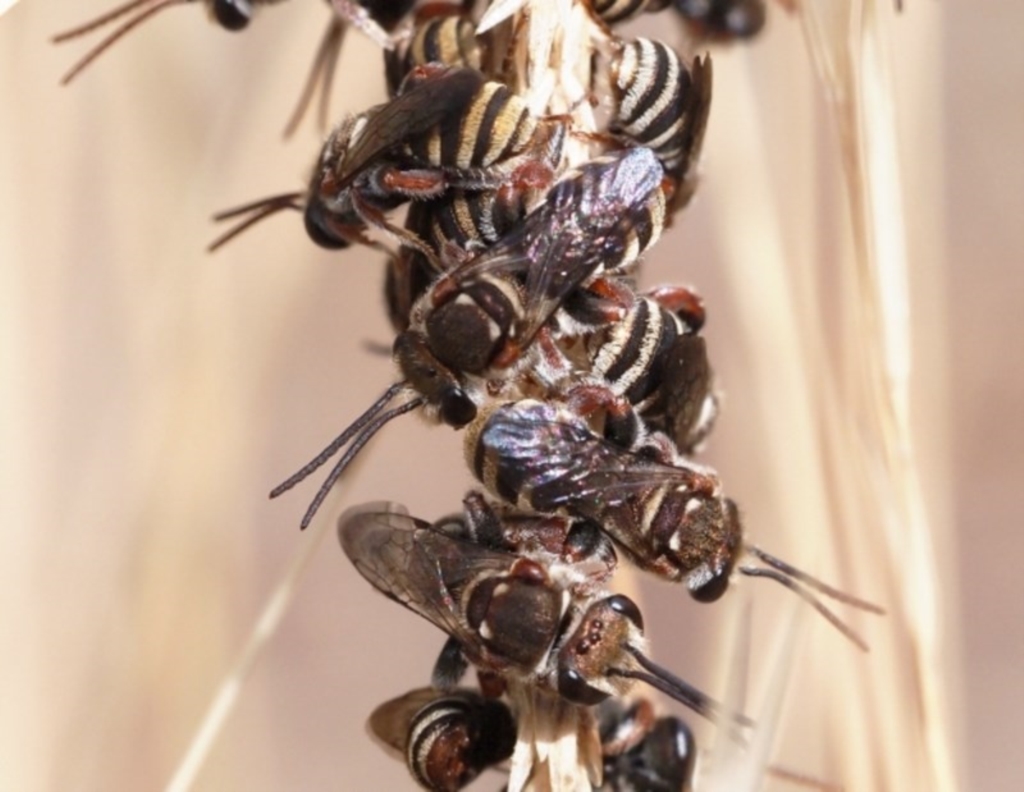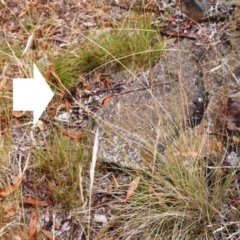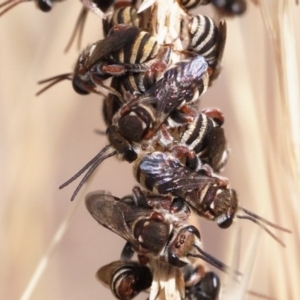Halictid bee at Macquarie, ACT
Identification history
| Lipotriches sp. (genus) | 8 May 2017 | michaelb | ||
| Lipotriches sp. (genus) | 8 May 2017 | michaelb | ||
| Lipotriches (Austronomia) australica | 8 May 2017 | Heino |
Identify this sighting
Please Login or Register to identify this sighting.
3 comments
Heino
wrote:
9 May 2017
I thought of Lipotriches australica after seeing the photo on page 74 of Roger Farrow's 'Insects of south-eastern Australia' where, in the caption, he says that in roosting aggregations of the male bees the heads face outward. After further searching the suggestion seems plausible, but by no means guaranteed. In the habitat shot the white arrow points to a small cluster of bees on old flower spikes of a plant of Poa labillardieri in a suburban garden. The spikes originate from the tussock near the lower right corner of the photo. I first saw these bees about a week before Christmas, 2016 and the last of them on February 15, 2017. In that period they were present every day and, almost always settling on spikes of only that Poa plant. Generally there were many tens of bees in a cluster and , for a week or two, well over a hundred settled in this area - mostly on that Poa but with some small clusters on Danthonias, no more than a hand span or two away. In my last week of seeing them, numbers were down to a dozen or so per day. None of the other grass tussocks in the yard had any bees. The bees were slow to move off each day, a good proportion often still there late morning. The first to return would often arrive by 4 pm. Initially there was much movement as more and more landed, with much jostling, dislodging and re-positioning. By early evening (but still in the good light of mid-summer) the bees were loathe to move. At that time my approaching finger failed to cause them to move. Indeed, I even had a few crawl onto my finger when it came into contact with a cluster and it took a bit of effort to get them back onto the grass spike, without picking up more.
michael.batley
wrote:
9 May 2017
They are Lipotriches, but seem a bit too small for L. australica. On the basis of the orange tegulae, I suspect they are Lipotriches phanerura or Lipotriches excellens (which is probably a synonym of L. phanerura).
Heino
wrote:
9 May 2017
Michael, Thank you for the comment and the confirmation of genus. I enjoyed seeing them over such a long time and await to see if there is a repeat next summer.
Please Login or Register to comment.
Nearby sightings
Location information
- Coordinates 149.066111-35.250556
- Places Macquarie, ACT
Sighting information
- 16 - 100 Abundance
- 17 Jan 2017 12:00 AM Recorded on
- Heino Recorded by
Species information
- Lipotriches sp. (genus) Scientific name
- Halictid bee Common name
- Not Sensitive
- Local native
- Non-Invasive
- Up to 776m Recorded at altitude
- 74 images trained Machine learning
- External link More information

























































































































